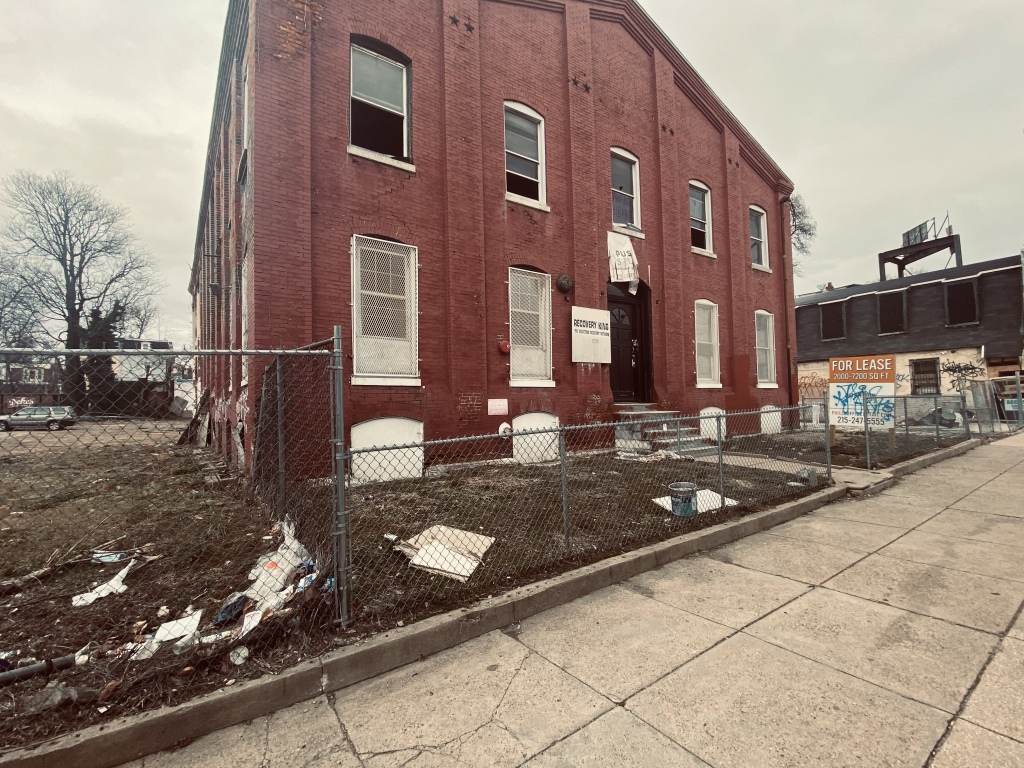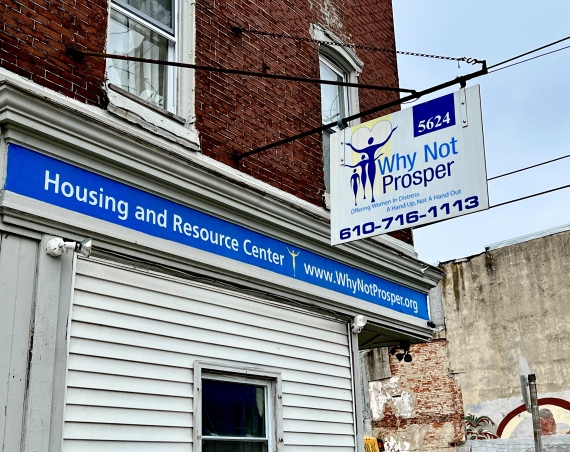
Germantown may be saying goodbye to a piece of Wayne Junction—and neighbors have mixed feelings.
Ken Weinstein of Philly Office Retail petitioned to demolish 113-29 Berkley St, also known as the Recovery King Building, an addiction treatment center. The unforeseen demolition will be part of the Wayne Junction redevelopment Weinstein announced almost four years ago, a $12 million-plus plan to turn eight properties into a mixed-use development, but now, one building will not be part of the project. Weinstein wants to tear it down, he says, and claims financial hardship.
“The rehabilitation of 113 Berkley Street is impractical and infeasible due to the significant cost of necessary repairs compared to the after renovated value of the property,” Weinstein wrote in his demolition application cover letter. “This creates a financial hardship for the owner which would result in a substantial financial loss both in terms of overall value and ongoing cash flow. We respectfully request that the Philadelphia Historical Commission grant this application for financial hardship.”
Weinstein also took to Facebook to explain , ‘We bought this historic building more than two years ago with every intention of saving and reusing it. He knew that the needed renovations would cost nearly $5 million but says the Recovery King building was “too far gone.”
More than 30 Germantown residents commented on the news via Facebook; some were concerned about a historic building being demolished and others understand all buildings can’t be saved. Uhura Russ was concerned with the lack of details in the explanation. The Germantown resident of more than 30 years says developers often do what they please.
“Yes, Ken Weinstein has done a lot in the neighborhood,” Russ says. “Don’t get me wrong, however, he’s benefiting from whatever he does. And you can say that in the guise of helping the community, but you’re not still talking to the real people. I think knowing the history of our buildings, knowing the history and the makeup of our neighborhoods, I think we really need to have a radical change in how we do things.”
Wayne Junction is a National Historic District, dating back to the 1880s. Known for its industrial past, recently Wayne Junction’s was full of abandoned warehouses —before Weinstein took on the project.
On Facebook, residents expressed interest in keeping the original plans for redevelopment; some found it hard to believe Weinstein was facing financial hardship. But aside from the historical aspect , Rahiem Brooks was not angered by the news. Brooks grew up on Berkley street in the 1970s and 80s. He remembers in 2nd grade, walking to the bus stop and noticing what he called an “eyesore.”
“As being labeled a historic building, what does that mean exactly,” Brooks said . “Oh, it was built X amount of years ago. For most of my childhood, that building to me, meant drug addicts walking up and down Wayne Avenue from that particular location.”
The Wayne Junction redevelopment also brought the conversation of gentrification back to the forefront. Gentrification has been a concern in Germantown for years as developers are moving into the Northwest area; buying properties and selling redeveloped buildings for more than double the price. A key question about this demolition that Brooks and others raised is what are the plans for the property , will redevelopment plans like Wayne Junction push people out of the neighborhood because of influxes of the wealthy and higher property taxes?
Philadelphia architect and Germantown resident Jacopo De Nicola says this is always possible.
De Nicola used to live in South Philly and watched as that neighborhood was built up; and people were pushed out. He says there are two sides to gentrification, one benefiting those who live in a community and the other, putting more money in developers’ pockets.
“One thing may spur to renovate and give new life to a neighborhood,” De Nicola says. “And the other one is a bunch of investors moving in, and then tearing everything up, replacing it with like, these cheaply made or quickly made condos…”
Weinstein and his group met with the Committee of Financial Hardship Wednesday, Jan. 27; and left with all five committee members voting to recommend the demolition to the Historic Commission. The hardship committee recommended the building be demolished because of proved financial hardship and no practical use; however whatever is built on the property in the future must be approved by the Historic Commission and selling is not up for discussion.
The Historic Commision will review the recommendation at their Friday, Feb.12 meeting. The public can attend the meeting and share input. Directions on how to attend February’s Historic Commission meeting visit here. Watch the previous Committee of Financial Hardship Meeting here.



